Location successfully changed to English (Global)
- Select a region
- English (Global)
- English (Asia)
- English (USA)
- 中文
- Deutsch
- Español
- Français
- 日本語
- Polski


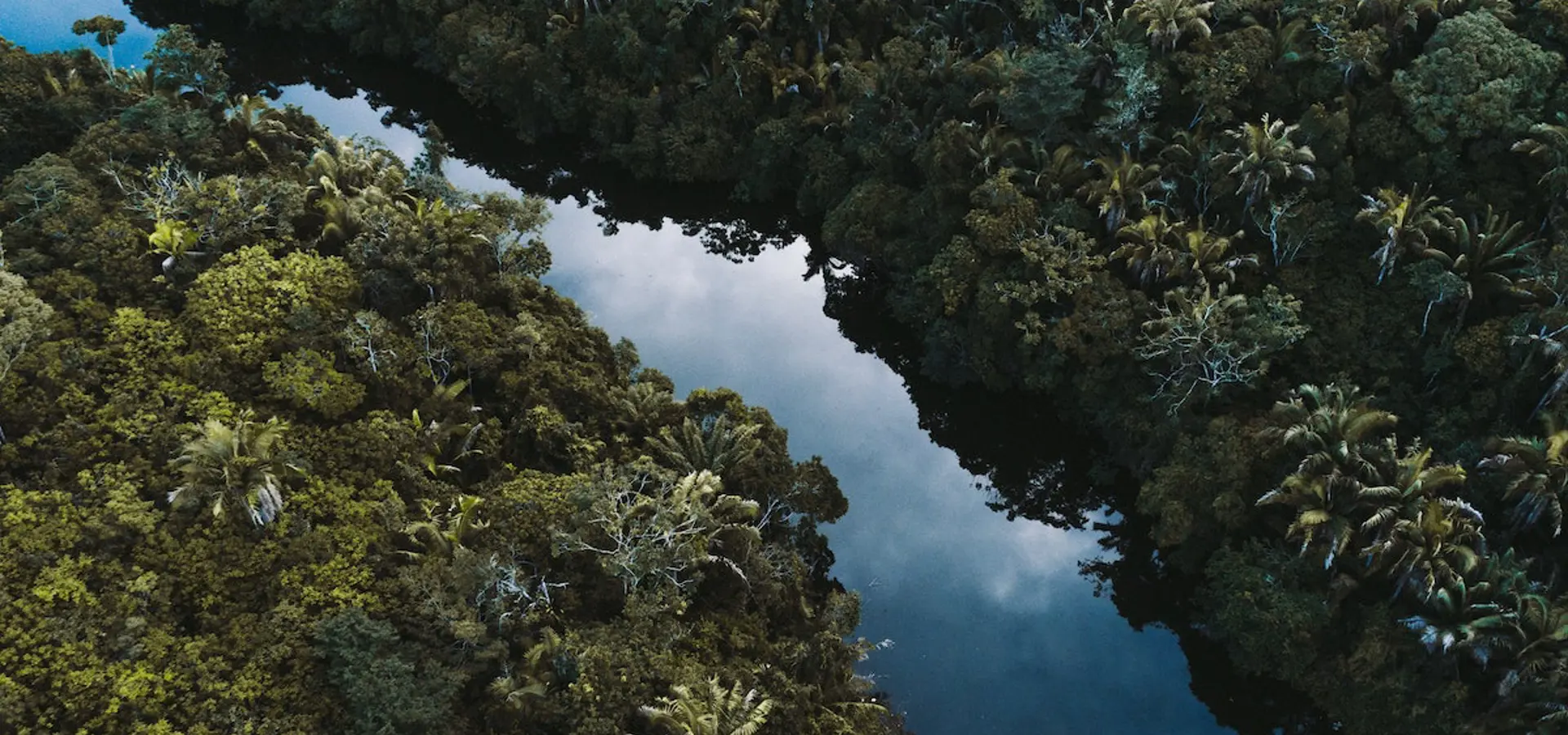
This is part of a series of articles and other creative pieces commissioned by ClientEarth to explore the debate around the most important environmental challenges we all face.
We asked science and environment author and journalist, David Adam, to take a detailed look at the planet's natural carbon sinks – why they are so vital for the survival of life on Earth, and just how important it is that we protect and conserve them.
In his celebrated book The Periodic Table the Italian author, chemist and Holocaust survivor described the fantastic journey of a single carbon atom, liberated from a limestone ledge, sucked into a leaf and eventually eaten to power the brain cell that persuaded Levi to press onto the page his story’s final full stop.
Levi died in 1987 but if he was writing the tale today, he might have described a more contemporary journey: how the carbon buried as oil, coal and gas is burnt to form the greenhouse gas carbon dioxide, which hangs around in the high atmosphere where it absorbs the Earth’s radiative heat, and so helps warm the planet. For that is the central conundrum of man-made climate change. It’s not the carbon itself that’s the problem, but where it ends up.
For millennia, the Earth’s carbon has been balanced by a cycle. Just like for other elemental building blocks, a series of interlocking natural processes move carbon through the soil, air and water, depositing it where needed and moving it on when its work is done. Part of that job includes keeping the planet warm. With no greenhouse gases in the atmosphere at all, Earth would be a frozen -18 degrees C. With too much, it would be more like our neighbour Venus where the greenhouse atmosphere keeps temperatures around 400 degrees C. The carbon cycle has helped to keep us away from these two extremes.
Occasional spikes, a burp of carbon dioxide from a volcano into the atmosphere say, were easily soaked up by oceans and forests, which put the extra material to good use -- to grow trees or feed marine life. Balance was restored, kept in check by interplay between what scientists call carbon sources (which tend to release the element) and carbon sinks (which tend to soak it up).
There is a natural carbon cycle on our planet. Every year, some atmospheric carbon gets taken up by land biosphere, some by the ocean and then cycled back out. These processes had been in balance for the last 10,000 years.
Now the historic balance is threatened. Human activity acts as a massive new carbon source. As we dig up and burn carbon previously stashed away as oil, coal and gas, adding billions of tons of the stuff to the air each year, we steadily tip the delicate scales that keep the planet’s temperature stable.
Luckily for us, the cycle’s carbon sinks have so far come with plenty of spare capacity. In fact, roughly half of the carbon dioxide emissions flung into the atmosphere since we started to burn fossil fuels for energy after the Industrial Revolution have been naturally cycled away again. The oceans have sucked up about a quarter of this carbon dioxide because it dissolves in water. Plants sucked up another quarter as they photosynthesised, using sunlight to convert it to glucose and oxygen.
That carbon drawn down from the air stands now as trees or sits buried in peat, grassland and soils. It is sealed in the deep ocean, dissolved in the water or drifting as sediment on the seabed. In other words, the Earth has cleaned up a good deal of our mess, and managed to hide much of the carbon we extracted from one long-term reservoir (the buried remains of millions of generations of ancient plants and animals) in another. In doing so, these carbon sinks act as a vital brake on global warming.
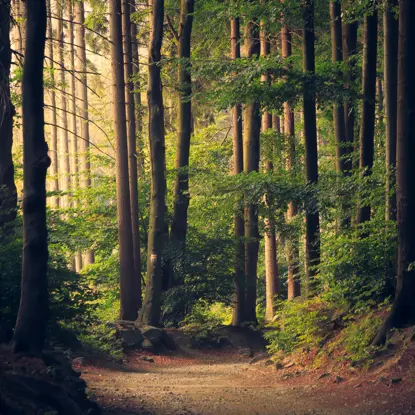
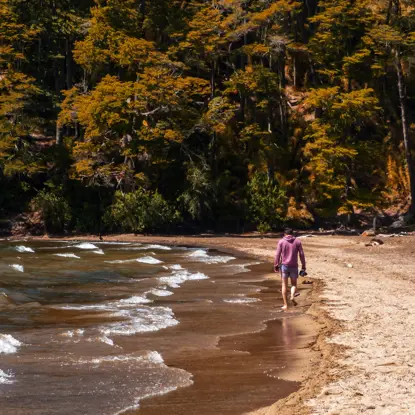
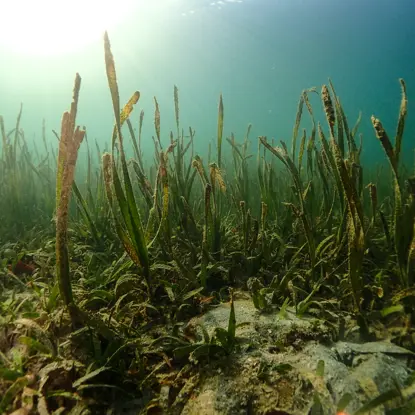
Framed in this way, the problem of climate change becomes not one of simply producing greenhouse gas, but how quickly we do so when compared with the Earth’s natural ability to soak it up again. And it makes that natural ability – the continuing capacity of forests and oceans to act as carbon sinks – as significant a factor in deciding the likely course of rising temperatures in the near future as intended controls on our greenhouse gas emissions. Yet many people are unaware of this side of the carbon balancing equation. And if they are, they take it for granted – they expect that forests and oceans and other carbon sinks will continue to act as our environmental get-out-of-jail-free card.
Or, more accurately, our go-to-jail-slightly-slower card. While sinks have managed to grab about half the carbon released as human pollution in recent centuries, the rest steadily accumulates in the atmosphere. The forests and oceans simply can’t suck it in fast enough. At the last count, atmospheric levels of carbon dioxide registered almost 412 parts per million (ppm) and rising. That’s a 47 per cent jump since the beginning of the industrial age, when the concentration was near 280 ppm, and an 11 per cent rise since just 2000, when it was near 370 ppm. Without our natural carbon sinks working to buffer the impact, that figure would probably be closer to 700ppm today.
It makes sense, then, that the future behaviour of Earth’s massive carbon sinks – and specifically the question of whether they will continue to bail us out by taking in carbon dioxide – is a key topic of research for scientists. How will tropical forests respond to warmer temperatures? Will ocean currents continue to carry carbon to the depths? What happens to the pace of climate change if the carbon-catching capacity of these sinks weakens?
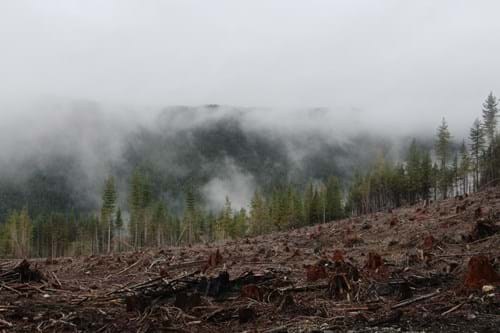
We don’t know the answers to these questions. More troubling still, human activity is already converting some traditional carbon sinks to carbon sources instead. Land use change such as clearing and burning forest for agriculture releases massive amounts of previously-secured carbon into the atmosphere. And as sinks shrink on land, carbon uptake in the oceans becomes even more important.
“Since anthropogenic emissions have increased the carbon dioxide in the atmosphere and land use change has decreased the land uptake ability, more carbon dioxide has been forced into the ocean,” Macovei says. “A really important aspect is whether the oceans will continue to be able to take up the excess atmospheric carbon.”
Some experts fear they will not. Not least because warmer water – and global warming nudges up the temperature of the sea surface by about 0.13 degrees Celsius each decade – can dissolve less carbon dioxide.
But, working with colleagues at the University of Southampton and the UK’s National Oceanography Centre, Macovei recently published results that suggest that, so far, at least some parts of the oceans are continuing to remove carbon from the atmosphere as we would hope.
The scientists looked at a region of the North Atlantic off the northwest coast of Spain. They found that over the last two decades or so (2002-2016) the upper layer of the sea had continued to soak up carbon dioxide at the same rate or even slightly higher. That’s surprising and goes against the results of some computer models that predict the sea surface will become too full of dissolved carbon dioxide to keep sucking it from the air above. In fact, the study found that the ocean concentration of carbon dioxide remained relatively constant.
A chemical buffering effect, which effectively enhances springtime carbon uptake, could be helping to protect the sink effect, Macovei says. “We think a combination of chemical and biological changes led to this carbon sink being maintained.”

One biological change they think responsible is increased growth of phytoplankton. These microscopic marine algae and bacteria use dissolved carbon for photosynthesis, and although they are small, together they can have an outsized effect. Photosynthesis produces oxygen, and phytoplankton contribute about half of the oxygen found in the atmosphere. And, as they grow, they gobble up about as much carbon as all the plants and trees on land combined. That’s why some call phytoplankton the ocean’s invisible forests.
Morten Iversen, an oceanographer with the Alfred Wegener Institute for Polar and Marine Research, says phytoplankton are the biggest reason why the oceans act as a carbon sink. “Without them the oceans wouldn’t do much,” he says. “Phytoplankton using the carbon means that it gets to sink down to the sea floor where it can be stored away for millions of years.”
That happens in a number of ways. Phytoplankton themselves sink from the surface when they die. But they also sit at the bottom of the marine food chain and get eaten by other tiny creatures, which also fall to the depths when they die, taking the carbon with them.
Unknown and unseen to most of us, this drifting to the depths of dead plankton, together with their excrement and other detritus, generates a stunning natural phenomena: marine snowfall.
Bound with specks of sand and soot, the decaying material forms fluffy white flakes that grow as they fall. Some reach several centimetres across and fall for weeks before they finally reach the ocean floor. As they descend, these clouds of marine snow provide food for many deep-sea creatures in the dark parts of the ocean, who filter it from the water or scavenge it from the seabed. Flakes that reach the bottom get mixed into the slushy ooze that blankets about three-quarters of the deep the ocean floor, where it is further decomposed by bacteria. Enough makes it down to help increase the depth of this muddy ooze by an extra six metres every million years.
Marine snowfall is crucial to the oceans acting as a carbon sink – once it reaches the bottom the carbon is effectively removed from the system – but the process is poorly understood.
Iversen says that most oceanographers assumed that larger flakes fell more quickly, but he recently carried out a study that questioned that assumption. Using underwater cameras, he and a colleague checked on the progress of different sized flakes as they sank between 90m and 530m under the surface of the Atlantic. “We found there wasn’t a size-to-settling relationship,” he says. “This is important as it will change perceptions and will allow us to make better predictions of carbon sequestration in the deep ocean.”
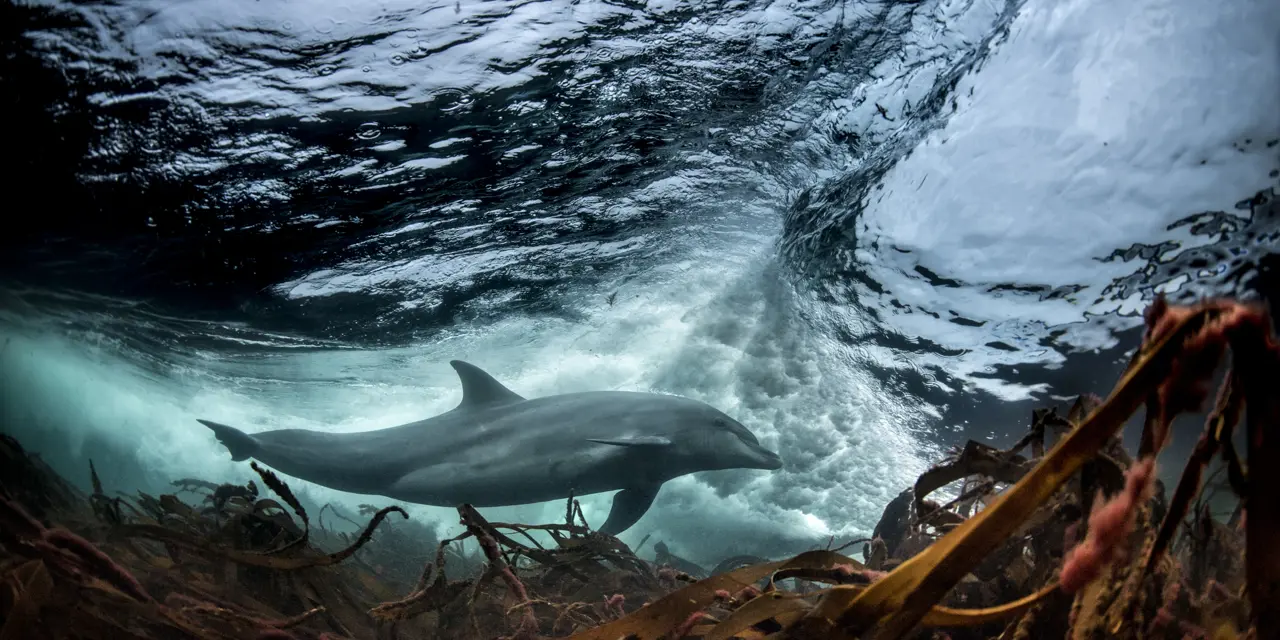
While carbon from the atmosphere being soaked up by the sea is a good thing from the perspective of climate change, both Macovei and Iversen point out there is an important downside.
“Increasing oceanic carbon dioxide causes ocean acidification,” Macovei says. “A process which damages marine organisms relying on building carbonate shells and could thus disrupt ecosystem balances.”
When carbon dioxide dissolves in seawater it forms carbonic acid. That’s a weak acid, but still enough to lower the pH of seawater, which is naturally alkaline. Since the industrial revolution, dissolved carbon dioxide has reduced the average pH of ocean surface waters by about 0.1 pH units, from about 8.2 to 8.1 (7 is neutral).
That change doesn’t sound much, but because pH is measured on a logarithmic scale, it actually represents a near 30% increase in acidity. This has some significant knock-on effects for seawater chemistry and the ecosystems that rely on it.
Extra acid is particularly bad news for shellfish and other sea life that relies on the mineral calcium carbonate to build shells and exoskeletons. More acidic water can hold less of this mineral, so there’s less available for so-called calcifying organisms such as clams, coral and oysters. Worse, the change in chemistry encourages existing carbonate structures to dissolve – even corroding apparently robust structures including shark teeth and scales.
Seawater acidification – often called the other carbon dioxide problem – could even weaken the ability of oceans to act as carbon sinks, depending on how phytoplankton and other sea life responds to what is an unprecedented natural experiment.
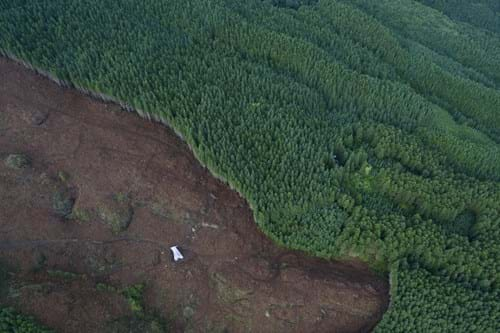
Carbon sinks on land are equally vulnerable to changes caused by carbon emissions. Though not all of the changes are bad. Most experts agree that increased carbon dioxide in the atmosphere has encouraged extra growth of vegetation in many parts of the world, because it boosts photosynthesis.
A NASA study in 2016, for example, concluded that a quarter to half of Earth’s vegetated lands showed significant greening since the early 1970s. This “global greening” represents an increase in leaves on plants and trees equivalent in area to two times the continental United States. Carbon dioxide fertilisation could explain 70% of the effect. And more leaves, of course, allow even more carbon dioxide to be soaked up from the air.
That sounds like good news, but it’s not clear if the trend will continue. Just like in the seas, scientists aren’t sure how land-based carbon sinks will respond to environmental change as global warming proceeds. There are fears, for instance, that extra heat and drought could dry the Amazon jungle to such an extent that it would kill off trees. Some even predict that within a couple of decades the trillion, which currently stores gigantic amounts of carbon, could start to release more than it absorbs. In other words, it could shift from being a carbon sink to a carbon source.
Forests really are a huge part of the solution to the climate problem. We need to manage them in such a way that they are still able to sequester lots of carbon.
Logging and other human activities to strip the forest also contribute to this weakening of the sink effect – as do other landscape changes across the world from the draining of peat bogs to the melting of previously perpetually frozen soils in the Arctic circle, which is warming faster than anywhere else on the planet. That’s one reason why it’s so important to protect these remaining carbon sinks where possible, by tackling deforestation and working to preserve soil and vegetation. It also makes it more important that we have a fuller sense of how existing carbon sinks work, and how much precious carbon they accumulate and store. Without this information, researchers can’t accurately model their role in climate change, and the size of the effect they can have both as sink and source.
In a recent study, for example, scientists have shown that forest edges are unusually rich carbon stores – at least in the temperate deciduous forests common in Europe. From Italy to Norway, the scientists found such woodland held 39% more carbon at the edge than 100 metres into the interior.
Camille Meeussen, a researcher at Ghent University in Belgium, who worked on the project, says it shows the importance of smaller, fragmented forests acting as carbon sinks. “Currently this edge influence is not taken into account and small forests are not considered as valuable,” she says. Up to 20% of the global forested area lies within 100 m of an edge, where better access to light and nitrogen nutrients can boost growth. “Edges have been understimated,” Meeussen adds.
The findings emphasise the need to protect even small and fragmented forests, she says. “They really are a huge part of the solution to the climate problem. We need to manage them in such a way that they are still able to sequester lots of carbon.”
A big part of that management is simply protecting and preserving the forest, and other carbon-rich vegetation and soil, that remains. Planting new forests on currently ‘marginal’ lands or restoring destroyed forests is another option. Changes in agricultural practice could help as well, such as shifting to no-till agriculture to safeguard soil organic matter. Mixing biochar, a type of charcoal, into soil can preserve organic carbon and improve retention of water and nutrients.
Forests are essential for people, wildlife and fighting climate change - but they’re under tremendous threat. We’re dedicated to preserving them.
Could carbon sinks be artificially boosted to increase the amount of carbon they remove from the atmosphere? Such a move would buy us time as we struggle to slash greenhouse gas emissions. Advocates of such schemes, often called geoengineering, argue they could even be used as “negative emissions” technology – to actively lower the concentration of carbon dioxide from the atmosphere.
Planting more trees is an obvious one – as long as they are the right trees in the right place. Data produced by the US Department of Agriculture’s Forest Service earlier this year suggested that fully stocking non-stocked and poorly stocked forests, particularly in western states, Florida and the northeast, would result in an annual increase of 20 percent in the amount of carbon they could sequester. On a larger scale, separate research suggests planting hundreds of billions of trees across the world – more than half a trillion perhaps – could reduce atmospheric carbon by a quarter. That’s enough to deal with about twenty years of human-produced greenhouse gases.
Geoengineers also have their sights set on the ocean and finding ways for it to swallow more carbon. Probably the most realistic are schemes to fertilise seawater -- adding iron to nutrient-poor waters to encourage the growth of those vital photosynthetic algae. Other ideas include technology called artificial upwelling that would use huge pipes to bring cold, nutrient-rich seawater from the depths to the surface, where it could stimulate algae growth to draw down carbon dioxide, and even cool the air above. Another aims to reverse the acidification trend. Because alkaline seawater can hold more carbon as dissolved ions, making the surface of the sea more alkaline – perhaps by adding lime – could keep more carbon dioxide from the air locked away.
Geoengineering is controversial, not least because some interventions could come with unpredictable side effects. And critics argue they could distract from the very-real need to phase out fossil fuels and replace them with cleaner sources of energy. But as the years roll by without the necessary action, geoengineering proposals are gaining attention and support. Proposed negative emissions schemes, such as growing huge amounts of energy-rich plants to be burnt for energy, and the resulting carbon dioxide trapped and stored underground, are now a key component of policies to limit global warming to 2 degrees C.
Humans are relying, in other words, on building artificial carbon sinks to save the planet. We don’t yet have the technology to do so. We might never have it. So, it makes sense to treasure, safeguard and value the natural sinks we already have.